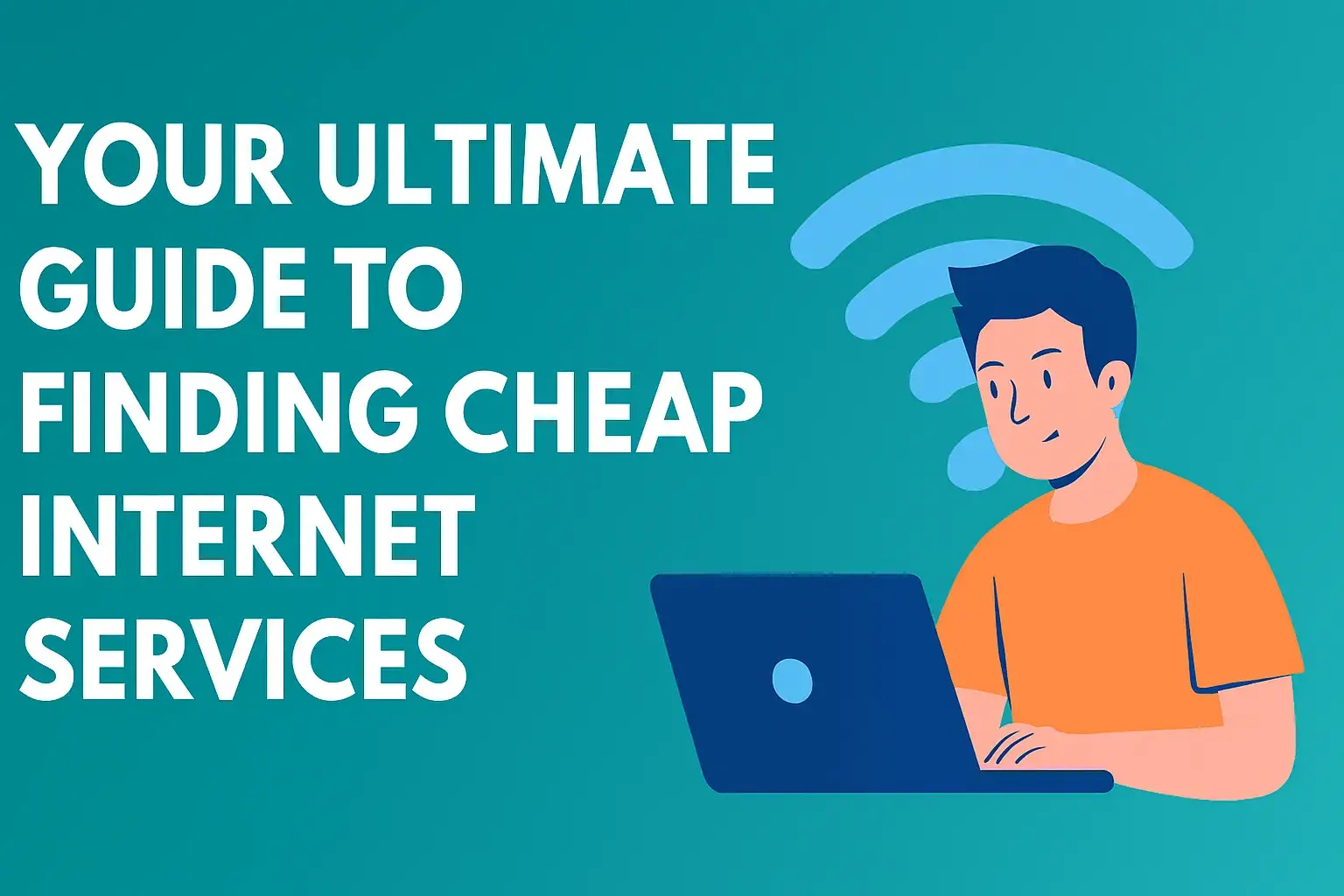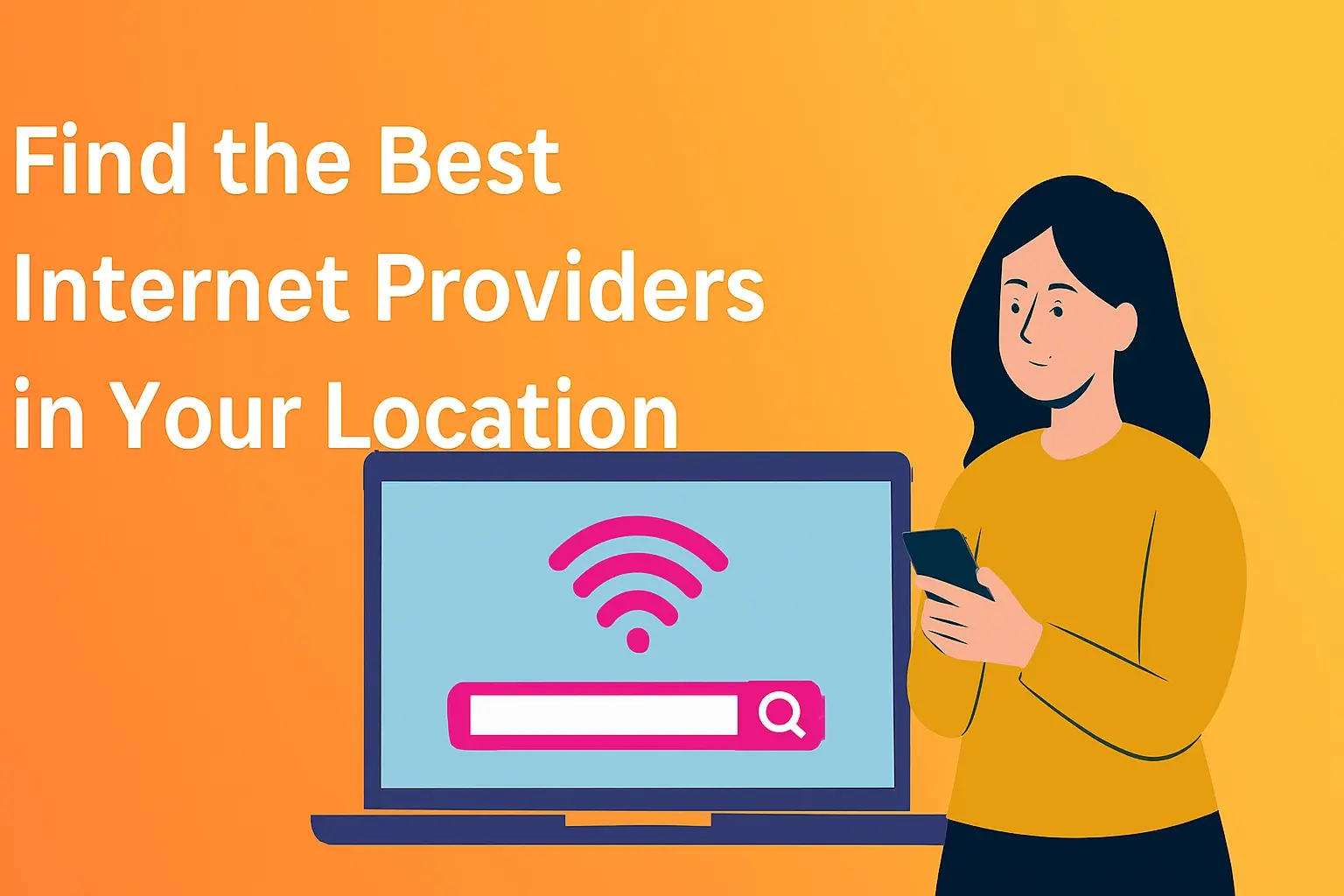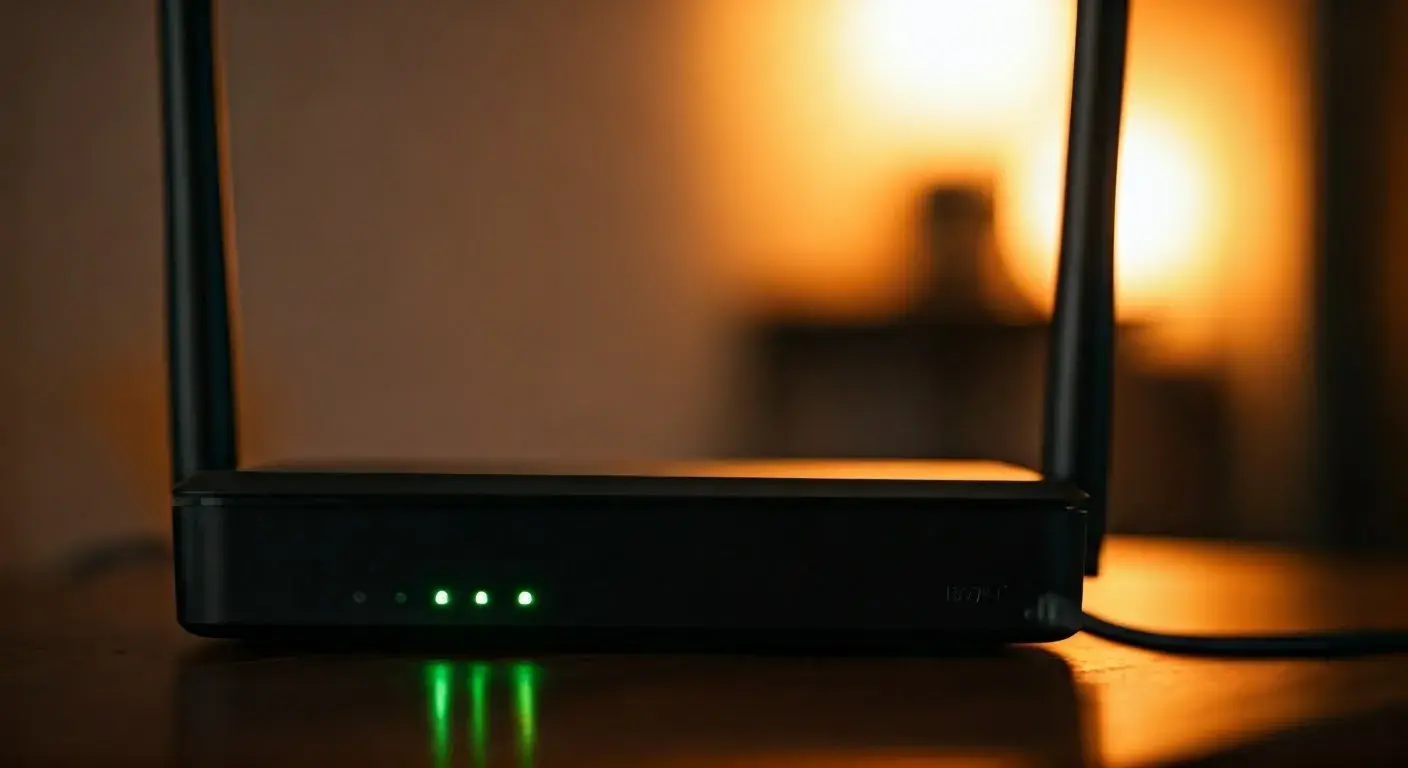7 Things About High Speed Internet

Unlock the full potential of your digital life with lightning-fast internet speeds. This guide delves into the seven essential aspects of high-speed internet, empowering you to make informed decisions and maximize your online experience. Discover how speed impacts everything from streaming to remote work.
1. Understanding Internet Speed Metrics
In today's hyper-connected world, the term "high-speed internet" is thrown around liberally. But what does it truly mean, and how can you differentiate between various offerings? Understanding the fundamental metrics is your first step towards making an informed decision. The two primary metrics you'll encounter are download speed and upload speed, both measured in megabits per second (Mbps) or gigabits per second (Gbps). A megabit is one-million bits, and a gigabit is one-billion bits. The higher the number, the faster your internet connection.
Download Speed: The Flow of Information to You
Download speed dictates how quickly data travels from the internet to your devices. This is the speed that matters most for activities like browsing websites, streaming videos, downloading files, and playing online games. For example, if you're watching a 4K movie, your download speed needs to be robust enough to buffer the video smoothly without interruptions. In 2025, the average broadband download speed in the US is projected to be around 150-200 Mbps, with fiber optic connections often exceeding 1 Gbps. For context, a standard HD movie download might take several minutes at 25 Mbps, but less than a minute at 100 Mbps.
Upload Speed: The Flow of Information from You
Upload speed, conversely, governs how quickly data travels from your devices to the internet. This is crucial for activities like sending large email attachments, uploading photos and videos to social media or cloud storage, participating in video conferences, and live-streaming. For remote workers, a good upload speed is paramount for smooth video calls and sharing large project files. In 2025, upload speeds often lag behind download speeds, especially in cable internet plans. Fiber optic connections typically offer symmetrical speeds, meaning upload speeds are as fast as download speeds, which is a significant advantage.
Latency: The Unsung Hero of Responsiveness
Beyond raw speed, latency (often referred to as ping) plays a critical role in your online experience, particularly for real-time applications. Latency measures the time it takes for a data packet to travel from your device to a server and back. It's measured in milliseconds (ms). High latency means a noticeable delay between your action and the response, which can be frustrating. For gamers, even a few milliseconds can mean the difference between winning and losing. In 2025, ideal latency for gaming is generally below 50 ms, while for general browsing, anything under 100 ms is usually acceptable.
Bandwidth vs. Speed: A Common Misconception
It's important to distinguish between bandwidth and speed. Bandwidth refers to the maximum amount of data that can be transferred over your internet connection in a given time. Speed is the actual rate at which data is transferred. Think of bandwidth as the width of a pipe and speed as the flow rate of water through that pipe. A wider pipe (higher bandwidth) allows for a greater potential flow rate (higher speed), but other factors like network congestion can affect the actual speed you experience.
Understanding Different Internet Technologies
The technology behind your internet connection significantly impacts its speed and reliability. The main types include:
- DSL (Digital Subscriber Line): Uses existing telephone lines. Speeds vary greatly depending on distance from the provider's central office, typically ranging from 5 Mbps to 100 Mbps download.
- Cable Internet: Uses coaxial cables originally designed for cable TV. Offers speeds from 50 Mbps to over 1 Gbps download, but can experience slowdowns during peak hours due to shared bandwidth in neighborhoods.
- Fiber Optic: Uses light signals transmitted through glass fibers. Offers the fastest and most reliable speeds, often exceeding 1 Gbps download and upload, with low latency. It's considered the gold standard for high-speed internet in 2025.
- Satellite Internet: Uses satellites to transmit data. Available in remote areas but typically has higher latency and lower speeds compared to other technologies, with speeds ranging from 25 Mbps to 100 Mbps download.
- 5G Home Internet: Utilizes cellular networks to provide internet access to homes. Speeds can be comparable to cable or fiber in some areas, ranging from 100 Mbps to over 1 Gbps, but performance can vary based on signal strength and network congestion.
Choosing the right technology is the first step to ensuring you get the high-speed internet you need for your daily activities. For the most demanding users in 2025, fiber optic and advanced 5G home internet solutions are leading the pack.
2. The Impact on Streaming and Entertainment
The advent of high-speed internet has revolutionized how we consume entertainment. Gone are the days of buffering wheels and grainy video playback. In 2025, streaming services like Netflix, Hulu, Disney+, and YouTube are the primary sources of entertainment for millions, and their quality is directly tied to your internet speed. High-speed internet ensures a seamless, immersive viewing experience, allowing you to enjoy your favorite content in the highest possible resolutions.
4K Streaming: The New Standard
Ultra High Definition (UHD), commonly known as 4K, offers a resolution four times that of Full HD (1080p). This means incredibly sharp details, vibrant colors, and a more lifelike viewing experience. However, 4K content demands significantly more bandwidth. For a smooth 4K stream, most services recommend a download speed of at least 25 Mbps. However, to ensure consistent performance without any buffering, especially when multiple devices are connected, having a speed of 50 Mbps or higher is advisable in 2025. Fiber optic internet is particularly well-suited for 4K streaming due to its consistent high speeds and low latency.
Simultaneous Streaming: A Family Affair
In most households, multiple people want to stream content simultaneously. One person might be watching a 4K movie in the living room, another is streaming a YouTube video on a tablet, and a third is listening to music on a smart speaker. Each of these activities consumes bandwidth. High-speed internet with sufficient bandwidth ensures that everyone can enjoy their chosen entertainment without impacting each other's experience. For a family with multiple streamers, a plan offering 100 Mbps or more is often recommended in 2025 to accommodate simultaneous usage without performance degradation.
The Role of Latency in Live Events
While download speed is crucial for on-demand content, latency becomes important for live streaming events, such as sports broadcasts or live concerts. High latency can cause a noticeable delay between the live action and what you see on your screen, leading to a less engaging experience. A stable connection with low latency, characteristic of fiber optic and well-deployed 5G, minimizes this delay, making live events feel more immediate and immersive.
Buffering: The Enemy of Enjoyment
Buffering occurs when your internet connection cannot download data fast enough to maintain a continuous playback stream. This results in the video pausing and displaying a loading icon. Low download speeds, network congestion, or high latency are common culprits. High-speed internet significantly reduces the likelihood of buffering, allowing you to immerse yourself in your content without frustrating interruptions. For instance, a 25 Mbps connection might struggle with 4K streaming during peak hours, whereas a 200 Mbps fiber connection will likely handle it flawlessly, even with other devices online.
Beyond Video: Music and Interactive Experiences
High-speed internet isn't just about video. It also enhances the experience of streaming high-fidelity audio, downloading music albums quickly, and engaging with interactive entertainment platforms. Cloud-based gaming services, which stream games to your device, also rely heavily on fast download speeds and low latency. As these services become more sophisticated in 2025, a robust internet connection is no longer a luxury but a necessity for a complete entertainment package.
In summary, for a superior streaming and entertainment experience in 2025, prioritize high download speeds and consider the impact of latency, especially for live events. Fiber optic and advanced 5G home internet solutions are leading the charge in delivering the bandwidth required for today's demanding entertainment needs.
3. Boosting Remote Work and Productivity
The shift towards remote work has made reliable, high-speed internet an indispensable tool for professionals. In 2025, the ability to work effectively from home hinges on a robust internet connection that supports a multitude of tasks, from video conferencing to accessing cloud-based applications and transferring large files. High-speed internet not only enables productivity but also enhances the quality of your work and your overall professional experience.
Video Conferencing: Crystal Clear Communication
Video conferencing platforms like Zoom, Microsoft Teams, and Google Meet are central to remote collaboration. These platforms require consistent download and upload speeds to ensure clear video and audio. Poor internet can lead to frozen screens, choppy audio, and dropped calls, all of which disrupt workflow and diminish professionalism. For a smooth, high-definition video call with multiple participants, a download speed of at least 10-15 Mbps and an upload speed of 5-10 Mbps are generally recommended. However, for business-critical meetings and to accommodate other simultaneous internet activities in 2025, aiming for 25 Mbps download and 10 Mbps upload or higher is a safer bet.
File Sharing and Cloud Collaboration
Many modern workplaces rely on cloud storage services (e.g., Google Drive, Dropbox, OneDrive) and collaborative platforms (e.g., Slack, Asana). Uploading large project files, sharing documents, and syncing data across devices require significant upload bandwidth. Similarly, downloading large datasets or project components relies on download speed. Slow upload speeds can create bottlenecks, delaying project timelines and frustrating team members. In 2025, with the increasing prevalence of large media files and complex datasets, symmetrical speeds offered by fiber optic internet are highly advantageous for businesses and remote workers alike.
Accessing Remote Desktops and Applications
Some professionals need to access company servers or run specialized software installed on office computers. Remote desktop applications and virtual private networks (VPNs) can facilitate this, but they are highly dependent on internet speed and latency. A fast and stable connection ensures that working on a remote desktop feels almost as responsive as working on a local machine. High latency can make these applications sluggish and difficult to use effectively.
Multitasking with High-Speed Internet
Remote work often involves multitasking: participating in a video call while simultaneously browsing research websites, referencing documents in the cloud, and responding to instant messages. Each of these activities consumes bandwidth. High-speed internet with ample bandwidth ensures that you can juggle multiple applications and tasks without experiencing slowdowns. For example, running a video conference (10-15 Mbps), browsing the web (2-5 Mbps), and using a cloud-based productivity suite (5-10 Mbps) simultaneously requires a connection that can comfortably handle these combined demands. In 2025, a minimum of 50 Mbps download is often considered essential for effective remote work multitasking.
The Economic Impact of Reliable Connectivity
Beyond individual productivity, reliable high-speed internet has a broader economic impact. It enables businesses to tap into a wider talent pool by hiring remote workers, reduces overhead costs associated with physical office spaces, and fosters innovation through enhanced collaboration. For individuals, it can open up new career opportunities and improve work-life balance. The investment in a high-speed internet plan in 2025 is an investment in career growth and professional efficiency.
Choosing the Right Plan for Remote Work
When selecting an internet plan for remote work, consider the following:
- Download Speed: Aim for at least 25-50 Mbps for general remote work, and 100 Mbps or more if you frequently handle large files or engage in high-definition video conferencing.
- Upload Speed: This is often overlooked but critical. For frequent video calls and file uploads, aim for at least 10-20 Mbps upload, with symmetrical speeds from fiber being ideal.
- Latency: Lower latency (under 50 ms) is beneficial for real-time communication and remote desktop access.
- Reliability: Choose a provider known for consistent service and minimal outages. Fiber optic and some 5G solutions offer superior reliability.
In 2025, the quality of your internet connection is directly proportional to your ability to perform effectively as a remote worker. Investing in a high-speed plan is no longer an option but a fundamental requirement for professional success.
4. Elevating Online Gaming Performance
For online gamers, internet speed and performance are not just about convenience; they are critical components of the gaming experience. High-speed internet, particularly with low latency, can significantly enhance gameplay, providing a competitive edge and a more immersive, enjoyable session. In 2025, with the rise of cloud gaming and increasingly complex online multiplayer titles, a robust internet connection is more vital than ever.
Low Latency (Ping): The Gamer's Best Friend
Latency, or ping, is the most crucial factor for online gaming. It measures the time it takes for your actions to register on the game server and for the server's response to reach your screen. High latency results in lag, where your character might move erratically, shots don't register, or you experience "rubber banding" (being pulled back to a previous position). For competitive gaming, ping below 50 ms is highly desirable, with many professional gamers striving for sub-30 ms. Fiber optic internet typically offers the lowest latency, making it the preferred choice for serious gamers in 2025.
Download and Upload Speeds for Gaming
While latency is king, download and upload speeds also play a role. Download speeds are important for downloading game updates, patches, and new games from digital storefronts like Steam, PlayStation Store, or Xbox Games Store. A fast download speed means less time waiting and more time playing. For example, downloading a 50 GB game could take over 3 hours on a 25 Mbps connection, but less than 10 minutes on a 1 Gbps connection. Upload speeds are less critical for most traditional multiplayer games but become important for game streamers who broadcast their gameplay live.
Cloud Gaming: The Future is Here
Cloud gaming services like NVIDIA GeForce NOW, Xbox Cloud Gaming, and PlayStation Plus Premium are transforming how games are played. These services stream games from powerful remote servers directly to your device, meaning you don't need a high-end gaming console or PC. However, this relies entirely on your internet connection. High download speeds are essential to stream the game's video feed without lag or visual artifacts, and low latency is crucial for responsive controls. In 2025, cloud gaming is becoming increasingly viable for mainstream gamers, provided they have a stable, high-speed internet connection, ideally 50 Mbps download and below 50 ms latency.
Downloading Game Updates and Patches
Modern games are constantly updated with new content, bug fixes, and balance changes. These updates can be substantial, often several gigabytes in size. High-speed internet dramatically reduces the time spent downloading these updates. A 10 GB update might take over an hour on a 25 Mbps connection, but it could be downloaded in under 5 minutes on a 200 Mbps connection. This ensures you can jump into the latest game content quickly without significant downtime.
Simultaneous Gaming and Streaming
For gamers who also stream their gameplay on platforms like Twitch or YouTube, both high download and upload speeds are necessary. Download speeds are needed for the game itself and for receiving viewer chat and game data, while high upload speeds are critical for sending out the high-quality video stream of the gameplay. Streaming a 1080p game at 60 frames per second typically requires an upload speed of at least 3-5 Mbps, but for a professional-quality stream, 10 Mbps or higher is recommended. This highlights the benefit of symmetrical speeds offered by fiber optic connections.
Choosing the Right Internet Plan for Gaming
When selecting an internet plan for gaming in 2025, prioritize:
- Low Latency: This is the most critical factor. Fiber optic connections are generally the best.
- High Download Speed: Aim for at least 50 Mbps, and 100 Mbps or more for faster downloads and better performance with cloud gaming.
- Sufficient Upload Speed: If you stream your gameplay, aim for 10 Mbps or higher upload speeds.
- Reliability: A stable connection with minimal packet loss is essential for uninterrupted gameplay.
Investing in a high-speed internet plan with low latency is one of the most effective ways to improve your online gaming performance and ensure you have a competitive edge in 2025.
5. Seamless Smart Home Integration
The "smart home" concept has moved from science fiction to reality, with an increasing number of households integrating connected devices for convenience, security, and energy efficiency. In 2025, the backbone of any functional smart home is a robust, high-speed internet connection that can reliably support numerous devices simultaneously. From smart thermostats and lighting to security cameras and voice assistants, each connected device relies on your internet to communicate and operate.
Supporting Multiple Connected Devices
A typical smart home in 2025 might feature dozens of connected devices: smart speakers, smart TVs, security cameras, smart locks, thermostats, refrigerators, lighting systems, and more. Each of these devices, even if they don't consume a lot of bandwidth individually, collectively place a demand on your internet connection. High-speed internet with ample bandwidth is essential to ensure all these devices can communicate with their respective servers and with each other without causing congestion or performance issues for other internet activities.
Smart Security Cameras and Streaming
Smart security cameras are a popular smart home feature, providing remote monitoring and alerts. These cameras often stream high-definition video to cloud storage or your mobile device. This process requires consistent upload bandwidth. A single 1080p security camera can consume 1-2 Mbps of upload bandwidth continuously. If you have multiple cameras, this demand increases significantly. High-speed internet with strong upload capabilities, especially symmetrical speeds from fiber, ensures that your security footage is reliably transmitted and accessible when you need it most.
Voice Assistants and Instant Responses
Devices like Amazon Echo and Google Home have become central to many smart homes, acting as hubs for controlling other devices and accessing information. These voice assistants rely on your internet connection to process voice commands and retrieve information from the cloud. Low latency is crucial for a responsive experience; you want your assistant to react instantly to your requests, not after a noticeable delay. High-speed internet ensures that your voice commands are processed quickly, making your smart home truly intuitive.
Smart Appliances and Remote Control
From smart refrigerators that can track inventory to smart ovens that can be preheated remotely, smart appliances offer unprecedented convenience. These devices connect to your home network to allow for remote monitoring and control via smartphone apps. This functionality depends entirely on a stable internet connection. High-speed internet ensures that you can reliably control your appliances from anywhere, whether you're at work or on vacation.
The Importance of a Stable Connection
For smart home devices, stability is as important as speed. Intermittent internet connections can cause devices to go offline, disrupt routines (e.g., smart lights not turning on), and compromise security (e.g., security cameras losing connection). High-speed internet technologies like fiber optic are known for their reliability and consistent performance, making them ideal for the demands of a connected home. In 2025, providers are increasingly offering plans specifically tailored to the needs of smart homes, emphasizing both speed and stability.
Troubleshooting Smart Home Connectivity Issues
If you're experiencing issues with your smart home devices, your internet connection is often the first place to look. Common problems include:
- Device Offline: May indicate a Wi-Fi issue or a general internet outage.
- Slow Response Times: Could be due to insufficient bandwidth, high latency, or network congestion.
- Inconsistent Performance: Often points to an unstable internet connection.
Upgrading to a high-speed internet plan, especially one with higher upload speeds and lower latency, can resolve many of these issues. Ensuring your Wi-Fi network is also robust enough to handle the number of devices is also critical.
In 2025, a high-speed internet connection is not just for entertainment or work; it's the essential foundation for a modern, efficient, and convenient smart home. Investing in a capable plan ensures all your connected devices function seamlessly, enhancing your daily life.
6. Download vs. Upload Speeds: What's Crucial for You?
Understanding the distinction between download and upload speeds is fundamental to choosing the right high-speed internet plan. While download speed is often emphasized, upload speed is equally critical for certain online activities. In 2025, with the increasing reliance on cloud services, video conferencing, and content creation, a balanced approach to both is often necessary.
Download Speed: Your Window to the Internet
As discussed, download speed determines how quickly data travels from the internet to your devices. This impacts your experience with:
- Streaming: Watching movies, TV shows, and live events.
- Browsing: Loading web pages, images, and videos.
- Downloading: Acquiring files, software, and games.
- Online Gaming: Receiving game data and updates.
For most households, download speed is the primary concern because the majority of online activity involves consuming content. A speed of 100 Mbps download is generally considered a good starting point for a typical family in 2025, with 200-500 Mbps providing a more robust experience for heavy users.
Upload Speed: Your Connection to the World
Upload speed dictates how quickly data travels from your devices to the internet. This is vital for:
- Video Conferencing: Sending your video and audio feed.
- File Uploads: Sending large files to cloud storage or email.
- Content Creation: Uploading videos to YouTube, streaming live gameplay.
- Online Gaming: Sending your commands and actions to the server.
- Backups: Uploading data to cloud backup services.
The importance of upload speed has grown significantly with the rise of remote work and content creation. A low upload speed can severely hinder your ability to participate effectively in video calls or share large files, even if your download speed is excellent.
Symmetrical Speeds: The Fiber Optic Advantage
One of the biggest advantages of fiber optic internet is its ability to offer symmetrical speeds, meaning your upload speeds are as fast as your download speeds. For example, a 1 Gbps fiber plan typically provides 1 Gbps download and 1 Gbps upload. This is a game-changer for users who frequently upload large files, stream content, or participate in high-bandwidth video conferences. In 2025, as more services demand robust upload capabilities, symmetrical speeds are becoming increasingly desirable.
When Download Speed Reigns Supreme
If your primary online activities involve streaming on a few devices, browsing the web, and occasional downloads, a plan with a strong download speed and a moderate upload speed might suffice. For example, a plan with 100 Mbps download and 10 Mbps upload could be perfectly adequate for a household that primarily consumes content and uses video calls sparingly.
When Upload Speed is Equally (or More) Important
Conversely, if you are a content creator, a remote worker who frequently presents or shares large files, a gamer who streams, or someone who regularly backs up large amounts of data to the cloud, then upload speed becomes paramount. In these scenarios, prioritizing a plan with higher upload speeds, or ideally symmetrical speeds, is essential. For instance, a video editor working from home might need at least 25-50 Mbps upload to efficiently transfer large video files to clients or cloud storage.
Assessing Your Needs: A Practical Guide
To determine your ideal balance of download and upload speeds in 2025, consider these questions:
- How many people will be using the internet simultaneously?
- What are your primary online activities (streaming, gaming, working, creating)?
- Do you frequently upload large files or stream live video?
- Do you rely on video conferencing for work or personal communication?
- What is your budget for internet service?
By honestly assessing your usage patterns, you can make a more informed decision. For instance, a student who primarily streams lectures and browses the web might be fine with 50 Mbps download and 5 Mbps upload. However, a freelance graphic designer who uploads high-resolution portfolios daily would benefit immensely from a plan offering 100 Mbps download and 50 Mbps upload, or even better, a symmetrical fiber connection.
In 2025, understanding the nuanced roles of both download and upload speeds allows you to select a high-speed internet plan that truly meets your specific needs, ensuring optimal performance for all your online endeavors.
7. Choosing the Right High-Speed Internet Provider
Selecting the right high-speed internet provider can be a complex process, with numerous options and technical specifications to consider. In 2025, the landscape includes traditional cable and DSL providers, along with emerging technologies like fiber optics and 5G home internet. Making the best choice requires understanding your needs, comparing offerings, and scrutinizing contract terms.
Assessing Your Internet Needs
Before comparing providers, it's crucial to understand your household's internet usage. Consider the following:
- Number of Users: How many people will be online simultaneously?
- Number of Devices: How many smart devices, computers, phones, and tablets connect to your network?
- Primary Activities: What do you do online most often? (e.g., streaming 4K video, online gaming, video conferencing, general browsing, uploading large files).
- Speed Requirements: Based on your activities, what download and upload speeds do you realistically need? (Refer back to previous sections for guidance).
For example, a single person who primarily browses and streams HD content might need 50 Mbps download, while a family of four with gamers and remote workers could require 200-500 Mbps download and significant upload speeds.
Comparing Internet Technologies and Providers
Different internet technologies offer varying levels of speed, reliability, and cost. In 2025, the main contenders are:
- Fiber Optic: Offers the fastest and most reliable speeds, with symmetrical upload/download capabilities. Ideal for demanding users, gamers, and smart homes. Availability is still growing.
- Cable Internet: Widely available and offers high download speeds, often up to 1 Gbps. Upload speeds are typically lower. Performance can vary during peak hours.
- DSL: Uses existing phone lines. Speeds are generally lower than cable or fiber and can degrade with distance from the provider's hub. Suitable for basic internet use.
- 5G Home Internet: A newer option that uses cellular networks. Speeds can be competitive with cable or fiber in some areas, but performance can fluctuate based on signal strength and network congestion.
When comparing providers, look beyond advertised speeds. Consider factors like data caps, equipment rental fees, installation costs, and customer service ratings.
Understanding Contracts and Fees
Many internet providers offer promotional pricing for the first 12-24 months, after which the price significantly increases. It's essential to understand the regular price of the service and any potential price hikes. Also, be aware of:
- Contract Length: Are you locked into a multi-year contract, or is it month-to-month? Early termination fees can be substantial.
- Data Caps: Some plans limit the amount of data you can use per month. Exceeding these limits can result in extra charges or throttled speeds. For high-speed users, unlimited data is often preferable.
- Equipment Rental: Providers often charge a monthly fee for modems and routers. You may be able to save money by purchasing your own compatible equipment.
- Installation Fees: Some providers charge a one-time fee for setting up your service.
Always read the fine print carefully before signing up for any service.
Customer Service and Reliability
Speed and price are important, but so is reliability and customer support. Check independent reviews and consumer reports to gauge a provider's track record for:
- Uptime: How often does the service experience outages?
- Customer Support: How easy is it to reach a representative, and how effectively are issues resolved?
- Technical Support: Are they knowledgeable and helpful when troubleshooting connection problems?
A slightly slower or more expensive plan from a highly reliable provider with excellent customer service might be a better long-term investment than a cheaper, faster plan with frequent outages and frustrating support experiences.
Leveraging Promotions and Bundles
Internet providers often offer special promotions for new customers, such as discounted rates, free installation, or upgraded equipment. It's worth shopping around and even contacting your current provider to see if they can match or beat competitor offers. Bundling internet with TV or phone services can sometimes lead to savings, but always ensure that the bundled package genuinely offers better value than purchasing services separately.
Making the Final Decision
Once you've assessed your needs, compared technologies and providers, reviewed contracts and fees, and considered reliability, you'll be well-equipped to make an informed decision. In 2025, with the increasing demand for bandwidth across all aspects of life, choosing the right high-speed internet provider is a critical step towards ensuring a seamless and productive digital experience.
In conclusion, high-speed internet in 2025 is no longer a luxury but a fundamental necessity that underpins our entertainment, work, communication, and even our homes. Understanding the intricacies of speed metrics, the impact on various online activities, and the factors involved in choosing a provider empowers you to make a decision that best suits your lifestyle and budget. Whether you're a gamer seeking low latency, a remote worker requiring robust upload speeds, or a family wanting uninterrupted 4K streaming, there's a high-speed internet solution available. By prioritizing your specific needs and thoroughly researching your options, you can unlock the full potential of the digital world and ensure a smooth, efficient, and enjoyable online experience for years to come.
High Speed Internet Provider About High Speed Internet





